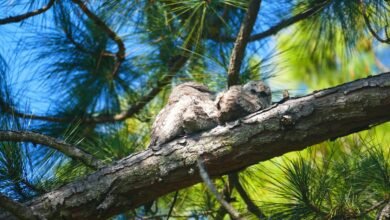A New Zealand fur seal
On the steps of the Opera House at Bennelong Point. He’s been a regular visitor since 2014, he’s a long-nosed fur seal and looking at his size, it’s probably a sub-adult or an adult male and his body condition is good.
The original seal was called Benny after Bennalong – he now has a companion. Most fur seals prefer offshore islands or rock platforms with minimal human presence. It’s unusual for this animal to choose to go to the Opera House. ‘Site fidelity’ is very common in seals—particularly females. Where the females are born is where they’ll return to give birth to their pups. Over time there will be colonies that get full and so there will be animals that leave and go to other colonies.
There is a small group of long-nosed and Australian fur seals below Macquarie Lighthouse on the ocean side of Watson’s Bay. These animals were hunted extensively in the 1790s and 1800s By the early 1900s there was a ban on hunting, mainly due to the fact that there weren’t that many animals left. The population has increased around 10% since the ‘90s, so it’s almost reaching that of their pre-sealing numbers.
They’re what we call a ‘generalist predator’. Typically, abundant oil-rich fish like red bait, leather jacket, gemfish, squid, lantern fish, as well as penguins and shearwaters. Whilst they’re at sea, they’re moving a lot—these guys swim big distances. It’s not uncommon for them to swim 100km in a day, even 1000km within a few days. So when they get back to land, with a belly full of fish, sleeping is a big part of their day. During the breeding season— between the months of November and January—males will be guarding their territories and mating with females, whilst females will be nursing their pups.
Ref: Andrew Irvine, Taronga Zoo, Caitlin Cheng, ‘Sydney’s seal of approval’, 8 May 2018https://www.sydneyoperahouse.com/community/







